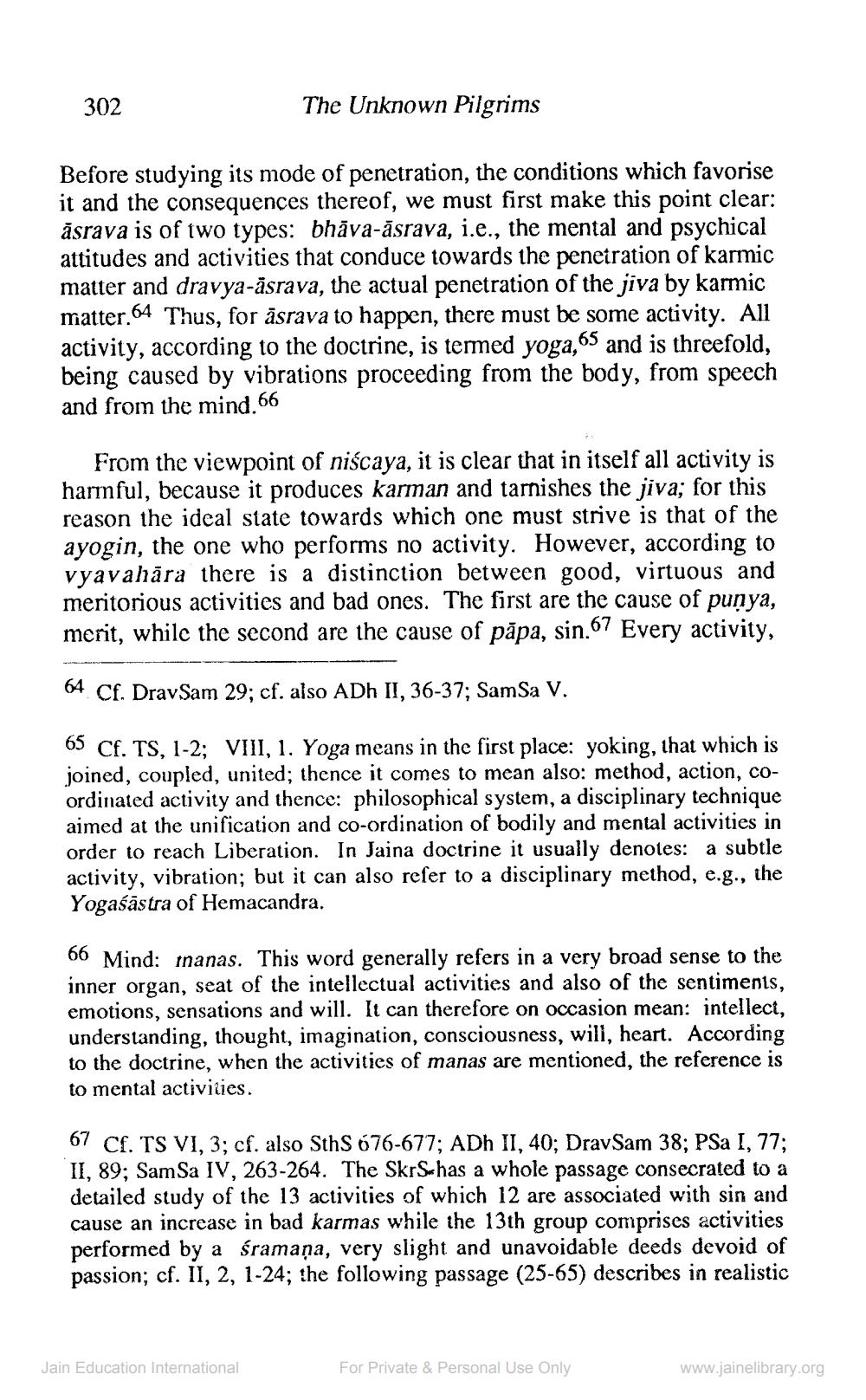________________
302
The Unknown Pilgrims
Before studying its mode of penetration, the conditions which favorise it and the consequences thereof, we must first make this point clear: asrava is of two types: bhāva-āsrava, i.e., the mental and psychical attitudes and activities that conduce towards the penetration of karmic matter and dravya-asrava, the actual penetration of the jiva by karmic matter.64 Thus, for asrava to happen, there must be some activity. All activity, according to the doctrine, is termed yoga, 65 and is threefold, being caused by vibrations proceeding from the body, from speech and from the mind. 66
From the viewpoint of niscaya, it is clear that in itself all activity is harmful, because it produces karman and tarnishes the jiva; for this reason the ideal state towards which one must strive is that of the ayogin, the one who performs no activity. However, according to vyavahāra there is a distinction between good, virtuous and meritorious activities and bad ones. The first are the cause of punya, merit, while the second are the cause of pāpa, sin.67 Every activity,
64 Cf. DravSam 29; cf. also ADh II, 36-37; SamSa V.
65 Cf. TS, 1-2; VIII, 1. Yoga means in the first place: yoking, that which is joined, coupled, united; thence it comes to mean also: method, action, coordinated activity and thence: philosophical system, a disciplinary technique aimed at the unification and co-ordination of bodily and mental activities in order to reach Liberation. In Jaina doctrine it usually denotes: a subtle activity, vibration; but it can also refer to a disciplinary method, e.g., the Yogaśāstra of Hemacandra.
66 Mind: ananas. This word generally refers in a very broad sense to the inner organ, seat of the intellectual activities and also of the sentiments, emotions, sensations and will. It can therefore on occasion mean: intellect, understanding, thought, imagination, consciousness, will, heart. According to the doctrine, when the activities of manas are mentioned, the reference is to mental activities.
67 Cf. TS VI, 3; cf. also SthS 676-677; ADH II, 40; DravSam 38; PSa I, 77; II, 89; SamSa IV, 263-264. The SkrSahas a whole passage consecrated to a detailed study of the 13 activities of which 12 are associated with sin and cause an increase in bad karmas while the 13th group comprises activities performed by a śramaņa, very slight and unavoidable deeds devoid of passion; cf. II, 2, 1-24; the following passage (25-65) describes in realistic
Jain Education International
For Private & Personal Use Only
www.jainelibrary.org




